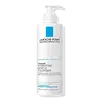What's inside
What's inside
 Key Ingredients
Key Ingredients

No key ingredients
 Benefits
Benefits

 Concerns
Concerns

 Ingredients Side-by-side
Ingredients Side-by-side

Water
Skin ConditioningSodium Laurylglucosides Hydroxypropylsulfonate
CleansingCocamidopropyl Hydroxysultaine
CleansingGlycerin
HumectantSodium Chloride
MaskingXanthan Gum
EmulsifyingCitrus Aurantium Dulcis Peel Oil
MaskingCitrus Paradisi Peel Oil
MaskingAloe Barbadensis Leaf Juice
Skin ConditioningAnanas Sativus Fruit Extract
Skin ConditioningCarica Papaya Fruit Extract
Skin ConditioningHibiscus Sabdariffa Flower Extract
Skin ConditioningPassiflora Incarnata Flower Extract
Skin ConditioningPanthenol
Skin ConditioningBromelain
Skin ConditioningCitric Acid
BufferingCoco-Glucoside
CleansingGlyceryl Oleate
EmollientGuar Hydroxypropyltrimonium Chloride
Skin ConditioningMaltodextrin
AbsorbentSodium PCA
HumectantAlcohol
AntimicrobialBenzoic Acid
MaskingBenzyl Alcohol
PerfumingDehydroacetic Acid
PreservativePhenoxyethanol
PreservativePotassium Sorbate
PreservativeSodium Benzoate
MaskingBenzyl Benzoate
AntimicrobialLimonene
PerfumingWater, Sodium Laurylglucosides Hydroxypropylsulfonate, Cocamidopropyl Hydroxysultaine, Glycerin, Sodium Chloride, Xanthan Gum, Citrus Aurantium Dulcis Peel Oil, Citrus Paradisi Peel Oil, Aloe Barbadensis Leaf Juice, Ananas Sativus Fruit Extract, Carica Papaya Fruit Extract, Hibiscus Sabdariffa Flower Extract, Passiflora Incarnata Flower Extract, Panthenol, Bromelain, Citric Acid, Coco-Glucoside, Glyceryl Oleate, Guar Hydroxypropyltrimonium Chloride, Maltodextrin, Sodium PCA, Alcohol, Benzoic Acid, Benzyl Alcohol, Dehydroacetic Acid, Phenoxyethanol, Potassium Sorbate, Sodium Benzoate, Benzyl Benzoate, Limonene
 Reviews
Reviews

Ingredients Explained
These ingredients are found in both products.
Ingredients higher up in an ingredient list are typically present in a larger amount.
Glycerin is already naturally found in your skin. It helps moisturize and protect your skin.
A study from 2016 found glycerin to be more effective as a humectant than AHAs and hyaluronic acid.
As a humectant, it helps the skin stay hydrated by pulling moisture to your skin. The low molecular weight of glycerin allows it to pull moisture into the deeper layers of your skin.
Hydrated skin improves your skin barrier; Your skin barrier helps protect against irritants and bacteria.
Glycerin has also been found to have antimicrobial and antiviral properties. Due to these properties, glycerin is often used in wound and burn treatments.
In cosmetics, glycerin is usually derived from plants such as soybean or palm. However, it can also be sourced from animals, such as tallow or animal fat.
This ingredient is organic, colorless, odorless, and non-toxic.
Glycerin is the name for this ingredient in American English. British English uses Glycerol/Glycerine.
Learn more about GlycerinPanthenol is a common ingredient that helps hydrate and soothe the skin. It is found naturally in our skin and hair.
There are two forms of panthenol: D and L.
D-panthenol is also known as dexpanthenol. Most cosmetics use dexpanthenol or a mixture of D and L-panthenol.
Panthenol is famous due to its ability to go deeper into the skin's layers. Using this ingredient has numerous pros (and no cons):
Like hyaluronic acid, panthenol is a humectant. Humectants are able to bind and hold large amounts of water to keep skin hydrated.
This ingredient works well for wound healing. It works by increasing tissue in the wound and helps close open wounds.
Once oxidized, panthenol converts to pantothenic acid. Panthothenic acid is found in all living cells.
This ingredient is also referred to as pro-vitamin B5.
Learn more about PanthenolChances are, you eat sodium chloride every day. Sodium Chloride is also known as table salt.
This ingredient has many purposes in skincare: thickener, emulsifier, and exfoliator.
You'll most likely find this ingredient in cleansers where it is used to create a gel-like texture. As an emulsifier, it also prevents ingredients from separating.
There is much debate on whether this ingredient is comedogenic. The short answer - comedogenic ratings don't tell the whole story. Learn more about comegodenic ratings here.
The concensus about this ingredient causing acne seems to be divided. Research is needed to understand if this ingredient does cause acne.
Scrubs may use salt as the primary exfoliating ingredient.
Learn more about Sodium ChlorideWater. It's the most common cosmetic ingredient of all. You'll usually see it at the top of ingredient lists, meaning that it makes up the largest part of the product.
So why is it so popular? Water most often acts as a solvent - this means that it helps dissolve other ingredients into the formulation.
You'll also recognize water as that liquid we all need to stay alive. If you see this, drink a glass of water. Stay hydrated!
Learn more about Water